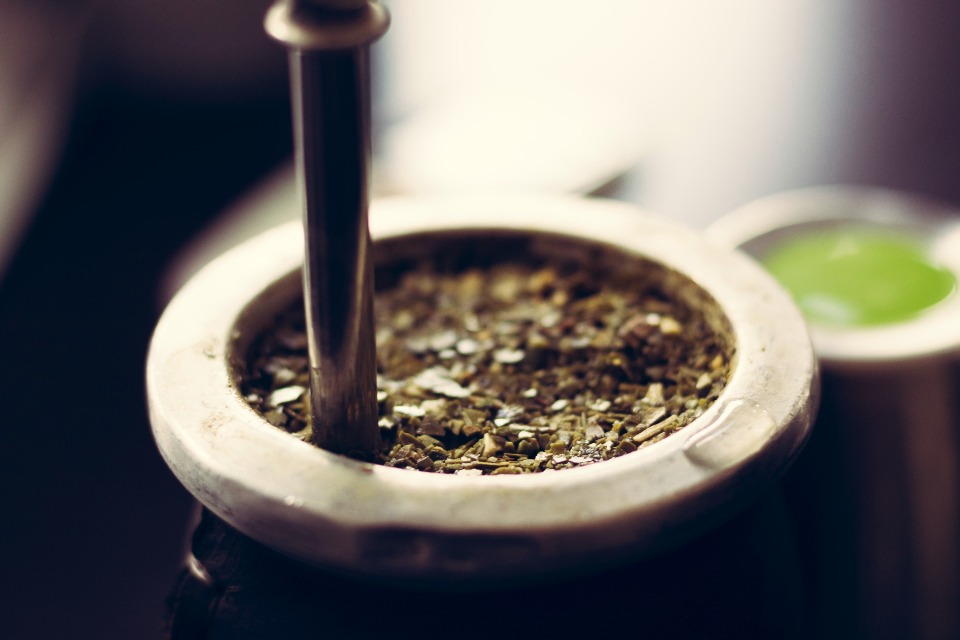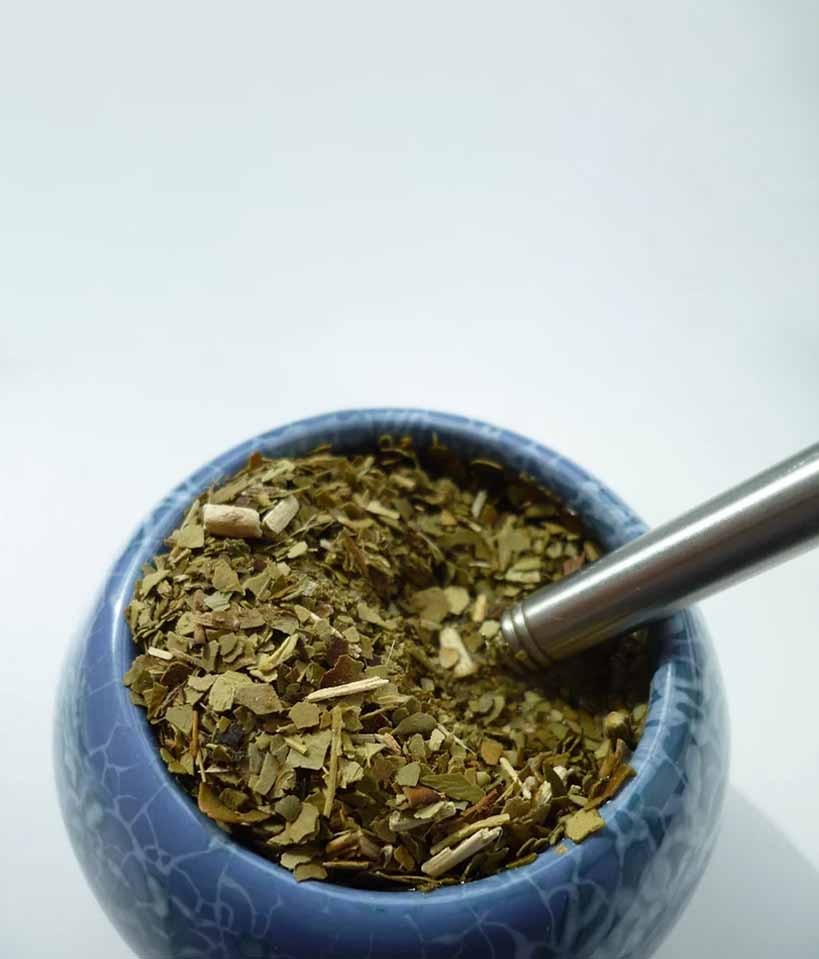Yerba Mate is an herb native to South America and while enjoyed like tea, it is not in any way related to camellia sinensis. It is often considered an herbal tea, but we consider it its own class of tea. The flavor of Yerba Mate varies quite a bit depending on where it was grown and the exact process of preparing it. Generally, it is somewhat earthy with a faint camphor smell and taste. Sometimes it can be bitter though not astringent like camellia sinensis tea.
Does Yerba Mate Have Caffeine?
Yerba Mate is one of the few plants that naturally produce caffeine. Along with camellia sinensis, coffee, cacao, kil, and guarana, yerba mate is a natural source of caffeine. The indigenous peoples of Paraguay and Southern Brazil considered yerba mate a gift from the gods because of the physical stamina it supplied them during physical labor. And that appreciation for Yerba Mate tea continues in many South American countries as it is the preferred morning wake-me-up instead of coffee. With 85 milligrams of caffeine to coffee’s 95 milligrams per eight-ounce cup, Yerba Mate’s caffeine content is similar to coffee.
How is Yerba Mate Grown?

Yerba Mate grows on an evergreen tree in the holly family. Much like caffeine-rich matcha, yerba mate is shade-grown which most likely contributes to its high caffeine content. It is also believed that growing yerba mate away from direct sunlight increases its flavor profiles. Trees need 4-6 years to mature and 12-15 feet in height before they are ready to be harvested. Yerba Mate is hand-picked every other year at the end of winter in September.
How is Yerba Mate Processed?
The five steps of processing yerba mate are sapecado, secado, canchado, beneficio, and milling.
Sapecado
Sapecado refers to the initial process of barely drying out the yerba mate branches. This process kills the enzymes which naturally occur in plants and leads to decomposition. Traditionally this part of the process was done over a fire but is now done with dehumidifiers. In the sapecado process, the yerba mate leaves lose about 20% of their weight.
Secado
The second step in processing yerba mate is secado. This further dries the leaves. The indigenous people had several different methods of completing this step. One was to dig a tunnel underground and build a fire in that tunnel. This heated up the earth underneath the yerba mate and smoke would come up through the ground, therefore smoking the leaves. This drying and smoking process is now completed using modern equipment.
Canchado
The third step involves cutting the leaves. Traditionally, machetes and heavy wooden mills were used for this step, but again, it is now automated. When traveling to South America, you may see a tea called canchado offered on menus. That tea is Yerba Mate that has just undergone the canchado step of processing and has not undergone the steps of aging or milling. This form of Yerba Mate is often more bitter than the yerba mate imported to the United States. Some even claim canchado has a “fishy” aftertaste.
Beneficio
Beneficio is the process of aging Yerba Mate. Most Yerba Mate is aged for at least six months and up to two years. Aging softens the natural bitterness found in the caffeine compounds of Yerba Mate. The longer it is aged the less bitter it becomes.
Milling
The final step of processing Yerba Mate is the milling or sifting step. Sifting machines separate the twigs, stems, and leaves. Some of the leaves are powdered. Then the yerba is blended into specific proportions of twigs, stems, leaves, and powder depending on the preferred recipe of each producer. More leaves mean the tea will rebrew more times. Stems add a bit of sweetness and act as a filter. Powder increases the caffeine content but can also increase the bitterness. So each producers’ Yerba Mate will be unique to their recipe.
How to Steep and Drink Yerba Mate

We are often asked, “How many times can you use or brew Yerba Mate?” Our answer. ”As many times as you have people!”
Traditionally drinking Yerba Mate is a shared experience considered a way of honoring friendships and hospitality. The one preparing and sharing the Yerba Mate is called a cebador and is the one who steeps the tea in a gourd. They complete the following steps:
- The tea leaves are placed in the gourd, shaken, and crushed.
- Cold water is added slowly allowing the leaves to rehydrate.
- Hot water between 160°F and 180°F is then poured into the gourd until it is filled.
- Using a straw with a filter called a bombilla the tea is sipped from the gourd.
- The cebador drinks that first infusion before rebrewing the same leaves for the next guest.
- Each guest drinks their gourd before returning the gourd to the preparer so a new brew from the same leaves can be prepared for everyone.
While it is a joy to share Yerba Mate with friends, this tea can also be brewed in an infuser, teapot, or even a French press for an everyday cup of Yerba mate. 1-2 tablespoons of Yerba Mate to 8 ounces of water. Brew at a cooler temperature than most teas– 160° – 180°F.
When you are ready to add this unique tea to your collection, SpiceTopia carries several different mate teas as well as Yerba Mate accessories such as gourds and bombillas.

What is Yerba Mate?
Note
Sources
"What Is Yerba Mate And Why You Should Drink It"
"8 Health Benefits of Yerba Mate (Back by Science)"
Yerba Mate: The Tea of South America by Pan American Union


